#Albert Broccoli
Explore tagged Tumblr posts
Text
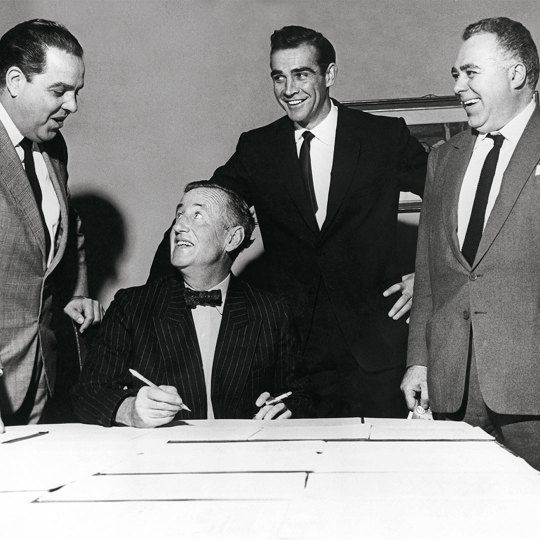
Ian Fleming and James Bond movie team (Albert Broccoli, Sean Connery, and Harry Saltzman)
35 notes
·
View notes
Text



Chitty Chitty Bang Bang (1968, Ken Hughes)
11/09/2024
#chitty chitty bang bang#1968#roald dahl#ken hughes#richard m. sherman#robert b. sherman#ian fleming#dick van dyke#Caractacus Pott#sally ann howes#truly scrumptious#Albert R. Broccoli#james bond#Irwin Kostal#Marc Breaux#Dee Dee Wood#united kingdom#europe#united states#Hollywood Los Angeles#1907#vacuum cleaner#television#luna park#Vulgaria#airship#Child Catcher#Class conflict#lullaby
20 notes
·
View notes
Text

SALTZMAN
FLEMING
BROCCOLI
22 notes
·
View notes
Text
My dear girl, there are some things that just aren't done, such as drinking Dom Perignon '53 above the temperature of 38 degrees Fahrenheit. That's just as bad as listening to The Beatles without earmuffs!” A blog inspired by the music world of James Bond Part 3A The Bond songs I am not so keen on Thunderball and The Man with the Golden Gun
Introduction
Hello there as part 2 covered the Bond songs that I love its only fair we cover the Bond films/songs that I don’t really like.

Thunderball
Originally meant as the first James Bond film, Thunderball was the centre of legal disputes that began in 1961 and ran until 2006.[14]
This article from the Screenrant website details how Thunderball nearly become James Bonds debut adventure at the cinema and if it had been made how it would have altered the James Bond film series over the next 61 years read it by clicking here https://screenrant.com/james-bond-first-007-movie-thunderball-franchise-changes/
Former Ian Fleming collaborators Kevin McClory and Jack Whittingham sued Fleming shortly after the 1961 publication of the Thunderball novel, claiming he based it upon the screenplay the trio had earlier written in a failed cinematic translation of James Bond.[15][6]
The lawsuit was settled out of court; McClory retained certain screen rights to the novel's story, plot, and characters. By then, Bond was a box-office success, and series producers Broccoli and Saltzman feared a rival McClory film beyond their control; they agreed to McClory's producer's credit of a cinematic Thunderball, with them as executive producers.[16]
Later, in 1964, Eon producers Broccoli and Saltzman agreed with McClory to cinematically adapt the novel; it was promoted as "Ian Fleming's Thunderball". Yet, along with the official credits to screenwriters Richard Maibaum and John Hopkins, the screenplay is also identified as 'based on an original screenplay by Jack Whittingham' and as 'based on the original story by Kevin McClory, Jack Whittingham, and Ian Fleming'.[16]
Thunderball Brought to Book
Screenrant the film website recently published an article ranking all 14 of Ian Flemings James bond books Thunderball was number 5 in thier list here are their comments about the novel
In many ways, Thunderball is arguably Fleming's most straightforward novel, though that's not a bad thing. The plot involves Bond investigating the disappearance of two nuclear weapons, which eventually leads him to the Bahamas and the home of SPECTRE agent Emilio Largo. While it offers very few surprises in the way of plot - Bond saves the day and gets the girl once again - Thunderball is, nevertheless, a charming and well-paced thriller that brings a fresh burst of energy and wit to the series.
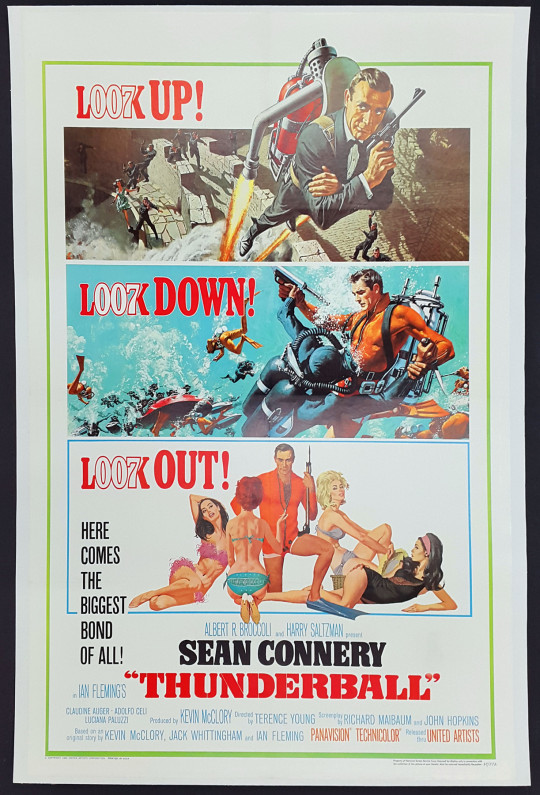
The 5 Basic rules to get a James Bond film to work
Let me start by saying that is a lot to like about Thunderball so I will start with the positives first and tell you why I don’t really like later,
The are 5 key areas in any Bond film that need to be tackled if you want to stand a chance these are in no Particular order the Bond Girls the gadgets the Villians the story and the music Thunderball as produced by Kevin McClory hits 4 of the 5 of these key objectives right on the nose indeed The What Culture website picked out the Bond girls in Thunderball as their standout moment of the film
22. Thunderball - The Bond Girls
With its bloated length and excess of underwater action, Thunderball's definitely the worst Bond film of the 1960s, and the unofficial remake, Never Say Never Again, is arguably better but it's still an enjoyable, glamorous retro action flick that gets some things absolutely bang-on - most of all, its Bond Girl characters.
While the Bond Girl was always a very important part of the series' formula, it was only with the fourth film in the series that the Bond series got this archetype absolutely right for the first time.
Few of the Bond Girls from the first three films were all that great. Even the best such character from the first three movies, Dr No's Honey Ryder (Ursula Andress) doesn't get enough to do in her film.
In contrast to its predecessors, Thunderball did a great job with its Bond Girls. There are two main Bond Girls - Domino (Claudia Auger) and Fiona Volpe (Luciana Paluzzi) - and they both rank amongst the franchise's finest even after all these decades.
Domino is a fantastic female lead that really feels like a fully-realized character, mainly because she actually has a compelling story going on. Ultimately, it's her actually who kills the lead antagonist, not Bond.

Similarly, Fiona Volpe is a very sinister and unsettling femme fatale who feels like a real threat to Bond and, even if her death scene was disappointing, she's still among the finest female villains in the Bond canon.
And talking about Fiona as played (Luciana Paluzzi) - The movieweb film website picked her as number 1 in their list of the deadliest women in the Bond Franchise this is what they had to say about the deadly SPECTRE female agent.
SPECTRE’s skilled assassin Fiona Volpe (Luciana Paluzzi) is tasked with seducing and killing a French Air Force pilot, and helps a fellow enforcer surgically alter his face to resemble the victim and take his place. Their plan is to steal a nuclear bomber armed with two warheads. After seducing and making fun of 007 (Connery), she holds him captive with the help of two other agents, but he manages to escape. Later, she catches on with him at a club, and attempts to distract him with slow-dancing, while her henchman fires at him from behind a curtain. But Bond spins her around just enough for her to be the bullet’s recipient.
“I forgot your ego, Mr. Bond. James Bond, who only has to make love to a woman, and she stars to hear heavenly choirs singing. She repents, then immediately returns to the side of right and virtue... but not this one!”
Volpe is the ultimate female villain because she is one of the few who are immune to 007’s charm. One of her most memorable scenes include her firing missiles at a car she’s pursuing on her motorcycle.
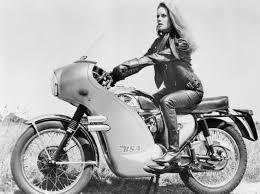

Q Branch
Gadgets again Thunderball scores high in this regard as well in fact it out does its predecessor' in the area Goldfinger and that used a lot of hardware.
In Thunderball we have :
Homing pill
When Bond takes this pill, it emits a signal that can be detected only by a certain receiver
Air supply
A small device that can be carried on the person without notice and when in use, is held in the mouth to provide four minutes of air in emergencies when the user has to go underwater. (Effectively a miniature Scuba set.)[18][9]
Underwater jetpack
Bond is equipped with a jet-propelled scuba tank.[9]
Breitling 'Top Time' Diver Chronometer watch
with built-in Geiger counter.
Underwater camera
capable of taking eight shots in succession in darkness using an infra-red film.[21]
Geiger counter camera
A camera that conceals a Geiger counter. Bond gives this to Domino to look for the bombs on the yacht.[22]
Miniature Very pistol
a pocket-sized flare gun firing a red signalling beacon.[22]
Cassette recorder hidden in book
Bond uses this to learn that Quist is hiding in his hotel room.[23]
Perharps the most famous of all the gadgets is the Bell Rocket Belt Jetpack indeed it top the list of Best Gadgets used in the Bond films on the Den of the Geek website
1. The Jetpack
Whether it’s science fiction or semi-realistic thrillers, the jetpack has become an example of a gadget that has captured moviegoers’ imaginations. Humans want to fly and the concept that one could be propelled using the thrust of an engine strapped to their back is a thrilling proposal. Jetpacks of course exist in the real world, and the iteration seen in Thunderball is not quite as fictionalized as many might expect, despite it differing from the hydro-packs audiences can actually experience today.
007 has flown a wide array of aircraft in his time, yet none seem quite as volatile as Connery’s backpack during his fourth film’s opening sequence. The Bell-Textron gear was originally built for the U.S. military but could only last in the air for about 20 seconds, making it a largely redundant design. Despite the dangers it posed, the production strapped Bond (or a stuntman) to the jet, with the character making a quick getaway through the air from his pursuers. It’s a remarkable moment in the movie, with the sound design reminiscent of a powerful plane thruster, helping to sell the idea of its sheer strength. Bond might look slightly clumsy getting lifted in the air by the jetpack, but the premise itself was intriguing enough to mesh well with his style and there really wasn’t anything cooler to a kid watching the scene for the first time.
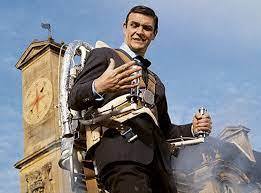
The final great strength of Thunderball is the amazing score by John Barry the above part of the blog quotes the sleeve notes written for the 2003 re-release of the full Thunderball score under the James Bond remastered series by Neil Bond.
Music
John Barry produced one of the most cohesive and propulsive of all of the Bond scores for Thunderball but he faced some trouble over his original title song taking his cue for Japan’s nickname for 007 Barry wrote a sly,insinuating tune called Mr Kiss Kiss Bang Bang (with lyrics by Leslie Bricusse and recorded it with both Shirley Bassey and Dionne Warwick . In keeping with his prior approaches to From Russia with Love and Goldfinger, Barry also wove his title melody into the fabric of his score and jaunty tune worked particulaly well as a counterpoint to the Bahamian night-life depicted in the film.
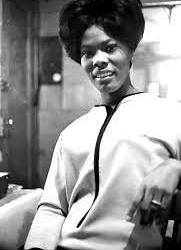
click here for a link to a you tube video of the song https://www.youtube.com/watch?v=nrNeTRrX4Zs or if you perfer the Shirley Bassey take on the song click here https://www.youtube.com/watch?v=l1debbldqGc
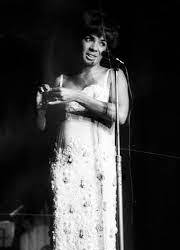
A change of course
However shortly before the film premièred however the producers realised the previous films had featured the films title in the song and they requested that Barry write a new song called Thunderball Not only did Barry face a rush deadline but Ian Fleming’s original title did not lend itself particularity well to lyrical treatment Since know one was actually sure what a Thunderball was.
Barry turned to Song writer Don Black to describe a mysterious man who runs while others walk and who strikes like Thunderball opening with a menacing six bar brass fanfare derived from The James Bond theme. The songs ambiguous lyrics meant the singer could be describing Both Bond or the films villian Largo
The song was recorded by Tom Jones who reportedly nearly passed out recording the songs final note
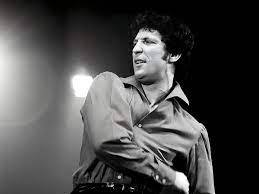
For the score Barry was able to write a great deal of atmospheric undersea water music for 007s survillance of Largos operation with low flutes and undulating suspended textures Early on the composer introduces a slow and subtle expression of the pulsating 007 theme he first created for Russia with love this theme became the basis for Barrys scoring of the Spectacular underwater battle and the climatic fight aboard the disco Valantie
The result is the most sustained and spectacular action music in the franchises history Barry was under enormous pressure to finish The Thunderball score and he only completed the first half of it when it became the time to release the soundtrack album
Part of the unreleased Thunderball score was included on the 2nd disk of the American version of the first Best of Bond CD in 1992 which featured a Thunderball suite of music totalling 16 mins of music the CD also included the Bassey and Warwick versions of Mr Kiss Kiss Bang the complete score was released in 2002 as part of the James Bond remastered series in 2002
But doesn’t include the Shirley Bassey or Dionne Warwick recordings of Mr Kiss Kiss Bang.
One more key strength of Thunderball is the killer 10 minute opening title sequence detailed by the collider film website in this article where they describe the scene as follows
These are hands down the 10 most intense minuites you will ever see in a Sean Connery James Bond Film I think they are slightly over egging the pudding but you can read the article here https://collider.com/sean-connery-james-bond-thunderball-opening-scene/
So after all those positives what don’t I like about Thunderball?
Well I find it really hard to watch at 2 hours 10 mins the film is a bit too long for me and the film editor Peter Hunt who did such a good job on the other films really should have got together with the script editor and cut a good 10 or 20 mins to make a much pacer film.
to watch a trailer for Thunderball click here https://www.youtube.com/watch?v=7JowkFmI1Fo&list=PL17vqAEJv6CUxmeZBk3JGDLBbcPEd4CDp&index=9
to watch a video with Sean Connery’s best moments as James Bond from the Storm Chaser Z Youtube channel click here https://www.youtube.com/watch?v=yfRuzgSR_XE&list=PL17vqAEJv6CV1syq4_fFKgBwSqGdJzH9z&index=288&t=56s
To read an article about how the Sean Connery James Bond films are ranked by James Bond fans click here https://www.cinemablend.com/news/2554534/james-bond-sean-connerys-movies-ranked
To watch a Sean Connery tribuite video called Thunderball 007 click here https://www.youtube.com/watch?v=ZYMZTIncsCM
The Man with the Golden Gun
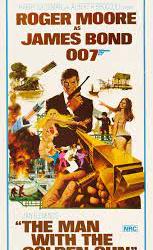
Roger Moore’s 2nd film as James Bond released Just a year after Live and Let and Die I think it was released to the public too soon Its not helped as well that film is based on an Ian Fleming James Bond novel that was not one of his best as this Screenrant article points out which ranked all 14 of Flemings James Bond books Man with the Golden Gun was number 13 on their countdown they had this to say about the book
The Man with the Golden Gun shouldn't be treated too harshly, given that it was Fleming's last Bond novel and was released eight months after he sadly passed away. Because of this, the book feels half-finished, almost like an early draft of something that Fleming intended to do rewrites on before sending it off to be published. And while there certainly is a decent novel in there, unfortunately, the version that made it to bookstores is a limp and lackluster imitation of Fleming's earlier 007 works.
As with any James Bond film even the bad ones there are some good things in it I like the Title track by Lulu (which was never released as in the UK or the US) the Bond girls in the film played by Maud Adams Andrea Anders and Britt Ekland as Mary Goodnight are Both very good.
As is Christopher Lee playing the man with the Golden Gun himself Francisco Scaramanga The What Culture website picked out his performance as the best thing in the man with the golden gun here are there comments
The Man with the Golden Gun, with its low stakes, dull story and general lack of memorable moments (aside from, perhaps, the barrel roll jump) which was highlighted in another article about James Bond this time looking at the 25 best set pieces in a James Bond film the barrel roll jump was number 24 in Yard Barkers list
This is a fairly standard car chase at first, and a highly annoying one at that given the presence of Clifton James’s J.W. Pepper. Why the redneck Louisiana sheriff from “Live and Let Die” would be vacationing in Thailand is a mystery for the ages; all that matters is that he’s along for the ride when Bond improvises a jump across a collapsed bridge with two spiraling ends. The “corkscrew jump” made the Guinness Book of World Records, but plays rather underwhelmingly in the movie thanks to composer John Barry’s baffling decision to score the stunt to a slide whistle.
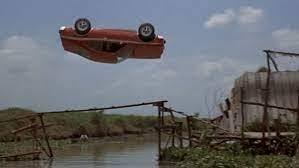
The Man With The Golden Gun is easily the single most mediocre instalment of the series. That being said, it is still fairly watchable, mainly because the villain is so great.
A superbly crafted, ultra-cool and gloriously badass assassin, Francisco Scaramanga is an exceptionally entertaining antagonist who really stands out in what is otherwise such a low-effort of the series. It certainly seems like more effort was put into him than into any other part of the movie.
He was already a very strong villain on paper, but Scaramanga was elevated to an absolute all-timer by one of the most on-point casting choices in Bond history. The great Sir Christopher Lee fit the part like a glove and gave an absolutely formidable performance.
As much as Scaramanga deserved a far better film than the one he got, he's still one of the best Bond villains ever.
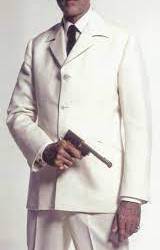
And the Golden gun itself was number 4 in Den of the Geeks Best Gadgets to feature in a James Bond film
Going back to the villainous theme, The Man With The Golden Gun included such a spectacular gadget that the film was named after it. The talented and deadly professional hitman, Francisco Scaramanga, had been given that very nickname because of the unusual firearm he carried with him. It might have been a calling card that has featured in the legacy of Bond pictures, but the gun was also crafted in a genius way to conceal it in everyday life.
Firing golden bullets, the weapon was custom made to separate out into different fragments, each of which represented a regular item: a pen, a lighter, a cigarette case, and a cufflink could all be disassembled from the firearm. Low frequency metal detectors are also far less effective at finding gold, meaning security would be a lot easier to travel through with the device on one’s person.
The slow assembly of the gun helps to raise the ominous tension of any scene. The gadget is such a perfect display of James Bond movies at their best, the narrative itself being driven forward by this conflict-causing surprise weapon, which not only rivals some of the best guns that Q has created but has also been involved in plenty of other Bond projects. It’s difficult to find a spinoff game for instance that doesn’t allow players to utilize the popular golden artifact.
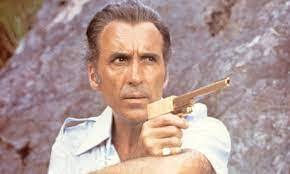
So why does The Man with the Golden gun miss its Target?
Guy Hamilton’s direction he was so good in Live and let Die yet its so bad here the man problem is James Bond himself Guy Hamilton has forgotten what made Roger Moore Bond tick there are even a few scenes in the film where Guy is trying to turn Roger Moore’s Bond into Sean Connery and it doesn’t work
Setting the film during the Energy Crisis of 1973 has dated the film very badly lastly why are people who work for Universal exports so angry with each other and acting out of character? To watch a trailer for the man with the golden gun click here https://www.youtube.com/watch?v=gF5fr3Zhi7E
To watch a video review of the film by Oliver Harper on his own You Tube channel click here https://www.youtube.com/watch?v=p1kiQD7J-ao
Pictures Thanks to Google images
1) one of the many posters for James Bond Thunderball 1965
2) Domino and James Bond at the Beach
3) Fiona Vulpe
4) Q on holiday in Thunderball
5) James Bond with his Jet pack
6) Dionne Warwick
7) Shirley Bassey
8) Tom Jones
9) Man with the Golden Gun poster from 1974
10) one of the best stunts ever seen in a Bond film the barrel roll from Man with the Golden Gun
11 and 12 Francisco Scaramanga with his Golden Gun
Notes
Thank you to the following websites for their links and content What Culture website for their best moments of Bond Den of the Geek for their top 10 countdown of Bond Gadgets Wikipedia for its background material on Thunderball
Oliver Harper youtube channel for the retrospective review of Man with the golden gun Stormchaser Z for the James Bond era videos also Neil Bond for his Thunderball soundtrack sleeve notes
And the Yard Barker website for their article title 25 Best Set piece from the Bond films
If you have read and liked this blog please consider giving a donation to the Tolerance project by clicking on this link https:https://gofund.me/5cf25de4
#you tube#Oliver Harper Youtube channel#james bond#Sean Connery#Roger Moore#Maud adams#Man with the golden gun#thunderball#John Barry#shirley bassey#dionne warwick#tom jones#Tolerance Project blog update#harry saltzman#Albert R Cubby Broccoli#Stormchaser z#Den Of Geek#don black#leslie bricuss#What Culture website#Google images#neil bond#wikipedia#Tolerance Project Blog update extended edition#YardBarker website#screenrant.com
3 notes
·
View notes
Text
The U.S. Food and Drug Administration (FDA) issued a recall notice on Dec. 2 for multiple brands of vegetables and whole carrots associated with the Grimmway Farms recall in November. This new list comes from 4Earth Farms of Commerce, California, a distributor that sells packaged vegetable medleys to grocery stores, including Walmart, Albert’s Organics, and Sprouts Farmers Market, among others.
------
There's a list of brands and lot numbers etc at the link.
Trump slashed the food safety regulations, and now he wants to do the same to the building codes.
1K notes
·
View notes
Text
So Barbs and Jeff Bezos are fighting
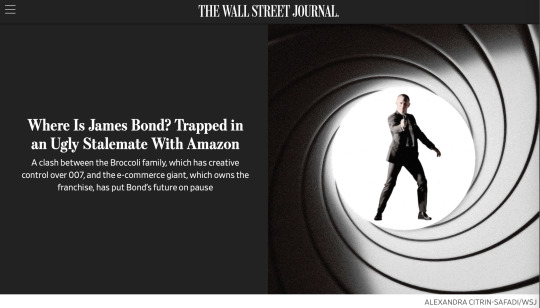
James Bond has dodged more than 4,000 bullets. He has jumped from an airplane, skied off a cliff and escaped castration by laser beam.
Now, 007 is in a new kind of peril.
Nearly three years after Amazon acquired the right to release Bond movies through its $6.5 billion purchase of the Metro-Goldwyn-Mayer Studio, the relationship between the family that oversees the franchise and the e-commerce giant has all but collapsed. The decaying partnership has scuttled any near-term hope of a new Bond film—a black eye for Amazon’s ambitions in Hollywood, since at the time of the MGM sale, the Bond franchise represented a significant share of the $6.5 billion the company paid for the studio.
When it comes to Bond’s future, the power lies in the hands of Barbara Broccoli, who inherited the control from her father, Albert “Cubby” Broccoli, and who for 30 years has decided when a new Bond movie can go into production. She has told friends she doesn’t trust algorithm-centric Amazon with a character she helped to mythologize through big-screen storytelling and gut instinct. This fall, she characterized the status of a new movie in dire terms—no script, no story and no new Bond.
To friends, Broccoli has characterized her thoughts on Amazon this way: “These people are f— idiots.”
A representative for Eon, the production firm behind the Bond films, said Broccoli and other members of the family had no comment.
The two sides are at an impasse: Amazon needs Broccoli to furnish them with ideas for a new Bond movie, but Broccoli doesn’t want to make a new Bond movie with Amazon. The standoff, say people on both sides of the divide, boils down to a clash between the 20th-century Hollywood of big screens and big swings and a new entertainment industry ruled by Silicon Valley firms that prize data, algorithms and streaming subscriptions.
This story is based on interviews with more than 20 people familiar with the Broccoli-Amazon feud, including executives, business partners and friends.
READ MORE
278 notes
·
View notes
Text
We finished reading Chitty Chitty Bang Bang today. The boychild's assessment?
"LOVELY! It was exciting. I loved that they defeated the gangsters! Can we read it again?"

Chitty Chitty Bang Bang is definitely an Ian Fleming book. It does not have the sex and violence of Bond, but the snappy writing, love of cars and gadgets and FOOD is all there. And while the avuncular tone (noted by many of his contemporaries both as praise and criticism) sometimes feels a little simplistic, it overall was a fun read.
An important point as a parent reading this to my kids was that the whole family was part of the adventure. Commander Caractacus Pott, his wife Mimsie Pott and their twins Jeremy and Jemima were all active participants. Mimsie is the least developed character, but I really appreciated that when the twins were kidnapped and plotting how to escape, they worked together and Jemima proved to be just as brave and smart as her brother.
Also, the original illustrations by John Burningham are quite fun.
NOTE: If you have seen the movie, be prepared that the screen version is a VERY loose adaptation. The screenplay was written by Roald Dahl and the director. Dahl also wrote the screenplay for You Only Live Twice, which likewise is a rather loose adaptation of the book by the same name. The musical was produced by Albert R. "Cubby" Broccoli, who had made five James Bond films to that point, and it does feature both
Desmond Llewelyn (Major Boothroyd "Q") as 'Bill' Coggins and Gert Fröbe (Goldfinger) as Baron Bomburst. That was a bit of fun for my kids.
Overall, our family recommends this book!
#ian fleming#chitty chitty bang bang#james bond#kid books#book review#the family that weirds together
22 notes
·
View notes
Text

Albert "Cubby" Broccoli
This photo appears to have been taken in the scottish loch where they filmed the boat chase scene for "From Russia with Love" (which originally was suppose to be filmed in Venice, Italy)
1 note
·
View note
Text

Roger Moore, on why he took the role of James Bond: "When I was a young actor at RADA, Noël Coward was in the audience one night. He said to me after the play, 'Young man, with your devastating good looks and your disastrous lack of talent, you should take any job ever offered you. In the event that you're offered two jobs simultaneously, take the one that offers the most money.' Here I am."
Owing to his commitment to several television shows, in particular "The Saint," Moore was unavailable for the James Bond films for a considerable time. His participation in "The Saint" was as actor, producer, and director, and he also became involved in developing the series "The Persuaders!" with Tony Curtis. In 1964, he made a guest appearance as James Bond in the comedy series" Mainly Millicent."
Moore stated in his autobiography "My Word Is My Bond" that he had neither been approached to play the character in "Dr. No" (1962), nor did he feel that he had ever been considered. Only after Sean Connery had declared in 1966 that he would not play Bond any longer did Moore become aware that he might be a contender for the role. After George Lazenby was cast in 1969's "On Her Majesty's Secret Service" and Connery was enticed back to the role of Bond again for "Diamonds Are Forever" (1971), Moore did not consider the possibility until it seemed clear that Connery had stepped down as Bond for good. At that point, Moore was approached, and he accepted producer Albert Broccoli's offer in August 1972. In his autobiography, Moore writes that he had to cut his hair and lose weight for the role. Although he resented having to make those changes, he was finally cast as James Bond in "Live and Let Die" (1973).
"I'm the worst Bond, according to the Internet. Generally hated! I was too funny, too light. Didn't take it seriously enough. Well, I mean, this is a man who is supposed to be a spy. And yet he turns up in bars and hotels around the world, and everyone says, 'Ah, Mr. Bond, we've been expecting you.' Everybody knows who he is and what he wants to drink. It's the same with the Bond girls. All the new ones say, 'Oh, I'm going to be different from the others, but before long it's always the same - 'Oh, James!'" (IMDb/Wikipedia)
Happy Birthday, Roger Moore!
17 notes
·
View notes
Text
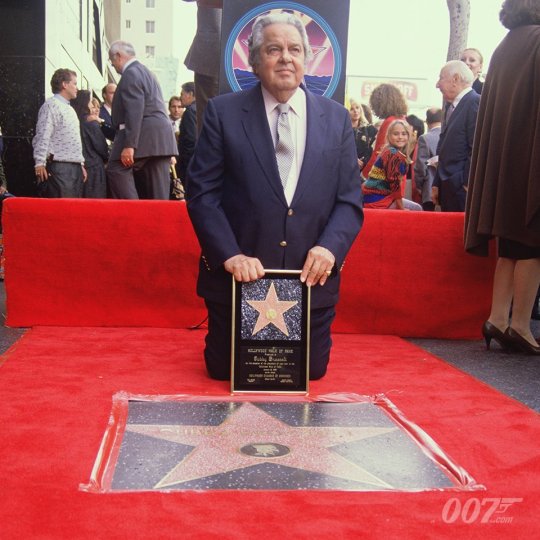
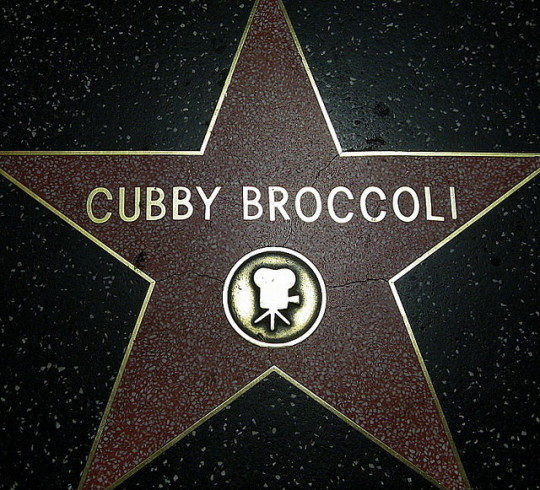
23 notes
·
View notes
Text

Sir Roger George Moore,
KBE (14 October 1927 – 23 May 2017) was an English actor. He was the third actor to portray fictional secret agent James Bond in the Eon Productions/MGM Studios film series, playing the character in seven feature films: Live and Let Die (1973), The Man with the Golden Gun (1974), The Spy Who Loved Me (1977), Moonraker (1979), For Your Eyes Only (1981), Octopussy (1983), and A View to a Kill (1985). Moore's seven appearances as Bond are the most of any actor in the Eon-produced entries.
On television, Moore played the lead role of Simon Templar, the title character in the British mystery thriller series The Saint (1962–1969). He also had roles in American series, including Beau Maverick on the Western Maverick (1960–1961), in which he replaced James Garner as the lead, and a co-lead, with Tony Curtis, in the action-comedy The Persuaders! (1971–1972). Continuing to act on screen in the decades after his retirement from the Bond franchise, Moore's final appearance was in a pilot for a new Saint series that became a 2017 television film.
Moore was appointed a UNICEF Goodwill Ambassador in 1991 and was knighted by Queen Elizabeth II in 2003 for services to charity. In 2007, he received a star on the Hollywood Walk of Fame for his contributions to the film industry. He was made a Commander of the Order of Arts and Letters by the French government in 2008.
Moore was appointed Commander of the Order of the British Empire (CBE) in the 1999 New Year Honours and was promoted to Knight Commander of the Order of the British Empire (KBE) in the 2003 Birthday Honours for charitable services, especially UNICEF and latterly Kiwanis International, which had dominated his public life for more than a decade. On being knighted, Moore said that the citation "meant far more to me than if I had got it for acting... I was proud because I received it on behalf of UNICEF as a whole and for all it has achieved over the years".
On 11 October 2007, three days before he turned 80, Moore was awarded a star on the Hollywood Walk of Fame for his work on television and in film. Attending the ceremony were family, friends, and Richard Kiel, with whom he had acted in The Spy Who Loved Me and Moonraker. Moore's star was the 2,350th star installed, and is appropriately located at 7007 Hollywood Boulevard.
On 28 October 2008, the French government appointed Moore a Commander of the Ordre des Arts et des Lettres. On 21 November 2012, Moore was awarded an honorary doctorate from the University of Hertfordshire for his outstanding contributions to the UK film and television industry for over 50 years, in particular film and television productions in Hertfordshire.
After his death, the Roger Moore Stage was opened at Pinewood Studios at a ceremony held in October 2017 to celebrate his life and work. His wife and family were in attendance along with Bond producers Michael G Wilson and Barbara Broccoli, and guests at the event included Joan Collins, Michael Caine, Stephen Fry, Tim Rice and Stefanie Powers.
In the 2018 film My Dinner with Hervé, Moore was portrayed by actor Mark Umbers.
Moore became a tax exile from the United Kingdom in 1978, originally to Switzerland, and divided his year between his four homes: an apartment in Monte Carlo, a holiday house in the coastal Tuscan town of Castiglione della Pescaia, a chalet in Crans-Montana, Switzerland, and a home in Saint-Paul-de-Vence, France. Moore became a resident of Monaco, having been appointed a Goodwill Ambassador of Monaco by Prince Albert II for his efforts in internationally promoting and publicising the principality. Moore was scathing of the Russian population in Monaco, saying, "I'm afraid we're overstuffed with Russians. All the restaurant menus are in Russian now."
Moore was vocal in his defence of his tax exile status, saying that in the 1970s, with taxes levied on top earners under the Labour government of James Callaghan, he had been urged by his "accountants, agents, and lawyers" to move abroad because, "At that point we were taxed up to 98% on unearned income, so you would never be able to save enough to ensure that you had any sort of livelihood if you didn't work." Moore said in 2011 that his decision to live abroad was "not about tax. That's a serious part of it. I come back to England often enough not to miss it, to see the changes, to find some of the changes good...I paid my taxes at the time that I was earning a decent income, so I've paid my due".
✔ Roger Moore is contentiously credited with inspiring the Walls Magnum ice cream. In the 1960s, he reportedly said that his one wish would be for a choc ice on a stick. Walls created this product and sent one to Moore. They later launched the Magnum in 1989, which is now the world's top-selling ice cream brand.
Daily inspiration. Discover more photos at Just for Books…?
11 notes
·
View notes
Text
Birthdays 4.5
Beer Birthdays
Thomas Hardy (1769)
Hew Ainslie (1792)
Edward W. Voight (1844)
George Gund (1855)
John Friedrich Wiessner (1859)
Robert Leo Hulseman (1932)
Tom McCormick (1957)
Steve Wagner (1958)
Lester Jones (1967)
Five Favorite Birthdays
Frank Gorshin; actor (1934)
Thomas Hobbes; English philosopher (1588)
Mike McCready; rock guitarist (1966)
Gregory Peck; actor (1916)
Spencer Tracy; actor (1900)
Famous Birthdays
Jane Asher; actor, model (1946)
Billy Bland; singer (1932)
Robert Bloch; writer (1917)
Albert Broccoli; film producer (1909)
Paula Cole; pop singer (1968)
Roger Corman; film director (1926)
Bette Davis; actor (1908)
Melvyn Douglas; actor (1901)
Agnetha Faltskog; pop singer, "Abba" (1950)
Jean-Honore Fragonard; French artist (1732)
Max Gail; actor (1943)
Vince Gill; country singer (1957)
Peter Greenaway; film director (1942)
Arthur Hailey; writer (1920)
Bob Kuberski; Green Bay Packers DT (1971)
Joseph Lister; medical doctor (1827)
Sybil Ludington; Revolutionary War hero (1761)
Mitch Pileggi; actor (1952)
Colin Powell; military general, politician (1937)
Samuel Cate Prescott; food scientist, microbiologist (1872)
Algernon Charles Swinburne; English writer, poet (1837)
Stanley Turrentine; jazz saxophonist (1934)
Booker T. Washington; writer (1856)
Herbert von Karajan; orchestra conductor (1908)
Tony Williams; pop singer (1928)
Elihu Yale; businessman (1649)
4 notes
·
View notes
Text
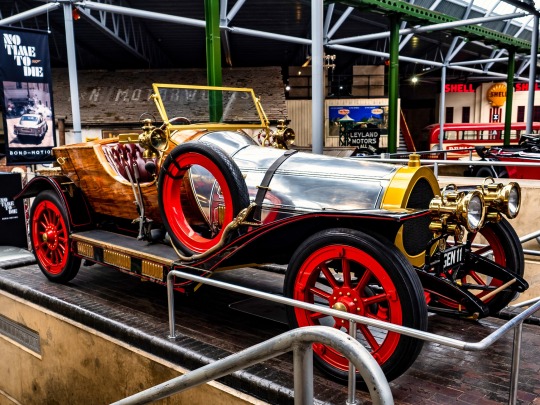
Chitty Chitty Bang Bang
12.16.1968
"Chitty Chitty Bang Bang", the British musical film loosely based on Ian Fleming's novel "The Magical Car" was released. Roald Dahl wrote the screenplay with Ken Hughes. In England, circa 1910, eccentric Caractacus Potts (Dick Van Dyke) works as an inventor, a job which barely supports himself, his even more eccentric father, and his two children, Jeremy and Jemima; but, they're all happy. When the children beg their father to buy for them their favorite plaything, a broken down jalopy of a car sitting at a local junkyard, Caractacus does whatever he can to make some money to buy it. Applying his inventing skills, Caractacus transforms the piece of junk into a beautiful working machine, which they name Chitty Chitty Bang Bang from the noise its engine makes. At a seaside picnic with his children and Truly, Caractacus spins a fanciful tale of an eccentric inventor, his pretty girlfriend, his two children, and a magical car named Chitty, all involved in the faraway land of Vulgaria. The child-like ruler Baron Bomburst, ruler of Vulgaria, will do whatever he can to get his hands on their magical car; but, because of Baroness Bomburst's dislike of children, youngsters are outlawed, even the unsuspecting offspring of foreign inventors of magical cars. The film was directed by Ken Hughes and produced by Albert R. Broccoli (co-producer of the James Bond series of films, also based on Fleming's novels). Fleming took his inspiration for the subject from a series of aero-engined racing cars called "Chitty Bang Bang", built by Count Louis Zborowski in the early 1920s at Higham Park. This photo of the movie car was taken at the National Motor Museum at Beaulieu in England during a 2022 visit.
38 notes
·
View notes
Text
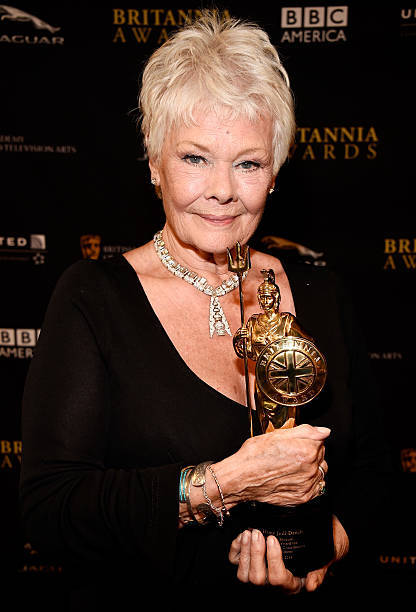
Britannia Awards, 2014 Photographer: Frazier Hamilton
*awarded Albert R. Broccoli Britannia Award for Worldwide Contribution to Entertainment
5 notes
·
View notes
Text
After 60 Years, It's Time to Let James Bond Retire With Dignity
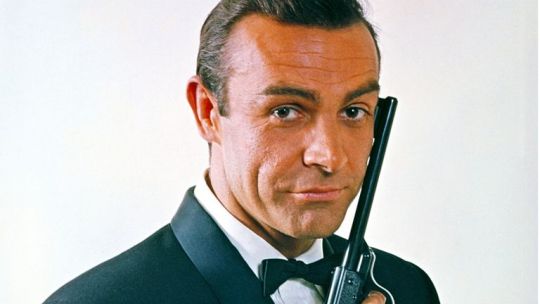
We’ve just had the news that Barbara Broccoli is stepping down as producer on the James Bond movies, giving creative control over to Amazon MGM. She’s the daughter of Albert R. “Cubby” Broccoli, and has been producing the series since Goldeneye in 1995.
Naturally, there’s a lot of concern about this, with people believing the franchise will suffer and become a playground for Amazon to try and make a name for themselves. I’m sure that will be true, but it’s not like this franchise was in a strong position anyway. In fact, if Amazon do put the final knife in and kill it off, so much the better.
The series is well past its best, and it would be a far nicer thing to let Bond retire for good. He’s out of his time, a product of the 1950s, who’s existed for far longer than intended. He’s a mirror of the world his creator, Ian Fleming, lived in.
A creature of gentlemen’s clubs, big losses and wins at the roulette wheel. A man of expensive watches, tailored suits, fast cars, and plenty of drinking, smoking and love-making.
In all of his incarnations, up to the most recent, he’s kept something of that. Sure, there were changes made to make him fit better with the ’70s, ’80s, and ’90s, but in most ways he remained the same character. They even made references to how he was a man out of his time, an anachronism. Maybe he’s not a particularly nice character, but that’s what he was.
Bond is what you might call an aspirational hero, rather than an inspirational one. He’s not relatable in the slightest, but is what many men would hope to be. I doubt there’s a man alive who hasn’t put on a tuxedo for the first time and imagined (or at least vainly hoped) that he bore some resemblance to the legendary spy.
Most men would like to think this lifestyle was for them, even if they grew out of it. They’d like to be as smooth, attractive, overpowering as he was. And even if this is something they’ll never experience personally, they could pretend for a couple of hours while watching him on the big screen.
Whether men still think like that isn’t important, because heroes are no made like that anymore. They have to be disassembled. All sincere heroes are, in some way, made into an object of ridicule or comedy, as is the case withe Marvel, or else have to be made more flawed and “human”. The latest version of the character didn’t even give “a damn” whether his vodka martini was shaken or stirred.
You see, 007 (as depicted onscreen) was supposed to be something of a superman. A kind of stand-in for Britain during the Cold War, always out there, ready to give the Soviets a good thrashing. But what’s the point of him now? There’s no Cold War and no Soviets. Any tech we could dream up to give him is pale in comparison with the tech we really have. Any attempt to make him into a larger-than-life character would end in the Marvelised style of self-deprecating humour.
Now these movies bear little resemblance to what they were, to what they always used to be until Daniel Craig took up the role and had to make it “grounded”. They are indistinguishable from a hundred other action movies, and anything that made them fun, memorable, or must-see events has been stripped away, to leave a more realistic portrayal of the character, fit for the 21st century.
Amazon won’t fix any of these things. Instead they will just make it into another content machine, in their quest to buy their way to being a credible movie studio. Who wants to see streaming shows about a young Bond, or an M spin-off, or maybe some origin stories for misunderstood villains?
You could say all of these things are needed to keep the franchise fresh. You could say it needs to keep up with the times, or risk being left behind. You might be right to say he’s not a likable character. But I say, if everything that made it unique and great has to be stripped away for it to survive, then it’s time for it to die.
In fact, for me, it did die when Craig entered, as a pale shadow of Bond. Whether you love or hate his portrayal, I think everyone can agree that Amazon won’t make it better, but the past few movies made big money, and as long as they continue to do so, the studio will continue to make them.
So let’s give Bond his leave, and let him retire to his gentleman’s club, to spend his days grouse shooting and playing cards. Let’s put him to rest in the 1950s and 1960s, the decades that created him, and let him leave with what dignity he has left still intact.
#james bond#bond james bond#bond#sean connery#daniel craig#ian fleming#amazon#amazon mgm#books#movies
3 notes
·
View notes
Text

Gute Nachrichten
1.
Bewilligt. Der Antrag auf den nächsten Forsch- und Lehraufenthalt in Pernambuco ist von brasilianischer Seite aus bewilligt. Recife, minha cidade, ich komme zurück, schon 2024, vielleicht sogar für vier Wochen.
Strenges Programm! Zwei Sachen sind zu erledigen: Der Forschungsbericht ist zu übergeben, d.h. das Protokoll und die Kommentare zu dem Aufenthalt 2019. Dazu würde ich gerne, falls ich wirklich vier Wochen dort sein kann, jede Woche 90 Minuten vortragen mit anschließender Diskussion. Perspektiven einer Kulturtechnikforschung, die Bild- und Rechtswissenschaft sein soll, das ist etwas aufwendig, weil es doch für viele neu und ungewohnt ist und man etwas Zeit braucht, um von den rhetorischen Institutionen (die in in Recife Lehr- und Forschungsschwerpunkt sind) über juristische Institutionen (sei das jetzt Gaius oder ein aktueller Fall zum Privatrecht oder zu Menschen- und Grundrechten) zur Theorie der Kulturtechniken zu kommen.
2.
Dann will ich drei Sachen weitertreiben: ein Protokoll zu einem Forum auf der Insel Itamaraca (die Fotos wurden mir einmal gestohlen); eines zu dem Sumpf in Recife (sehr unsicher, ob und wie ich das mache) und eines zu einem Markt im Sertao, denn ins Sertao muss ich eh so oft und lange wie möglich.
Der Markt in Buique bietet sich als Rindermarkt an, einmal war ich schon kurz dabei. Pesquiera ist noch noch nicht ganz Sertao, das ist in einem kleinen, sanften und recht grünen Tal, das sich bei Arcoverde zum Sertão hin öffnet, dort liegt dann auch schon das Val Catimbau (oben im Bild) mit seinen mäandernden Tafelbergen und seinen Graphismen nahe, das ist bereits magische Zone.
Ich kann es noch nicht wirklich glauben, dass ich wieder nach Recife komme, vermutlich werde ich erstmal leicht weinerisch oder mild hysterisch geschüttelt, wenn ich lande und das irrisierte und irrisierende Licht, die chromatische Aberration um mich herum habe und dann sicher weiß, ich könnte jetzt in zwei verschieden fantastischen Hotel wohnen: dem altschicken Hotel Central ohne Klimaanlage aber mit Nachbarschaft zu dem Wohnhaus von Clarice Lispector oder aber in dem 1980-Hotel schlechthin, dem Atlante-Plaza, dem Hotel mit blauverspiegelter Fassade, Klimaanlage, Dachpool und Bar unter künstlichem Wasserfall, also in der Zeitmaschine, die einen in die Filmära zurückträgt, in der Pierre Richard und Gert Fröbe noch in gemeinsamen Filmen auftraten oder Typen wie Albert R. Broccoli Talente wie Lotte Lenya und Robert Shaw um sich sammelte, um ... James-Bond-Filme zu produzieren. Kicher! Das muss man sich mal vorstellen. Der ganze Aufwand für fröhlichen Neunzigminutenklimbim, mit dem man dann noch eine große Industrie finanzierte. Gab es alles mal, wird Tag für Tag unglaubhafter, aber manche Hotels in Recife erinnern daran, dass es mal Zeiten gab, in denen Heterogenität und Homogenität wie Fuchs und Hase 'Gute Nacht' sagten. Nix wie hin.
Das Hotel Central hat zwei Sterne, rational betrachtet ist das korrekt berechnet. Kostes darum nur ungefähr 30 Euro pro Nacht mit Frühstück. Das ist ein Witz, totaler Witz. Das Hotel ist eine Sehenswürdigkeit, ein Museum, ein Studierobjekt. Man sollte seine Phobien leicht in Unerschrockenheit übersetzen können, sonst wird es in der Nachbarschaft schnell rauh und ungemütlich. Die Nachbarschaft lebt nämlich, thut einem aber nix, wenn man ihr nix thut und immer genug Geld bereit hat, das man gerecht zu teilen bereit ist. Zivile Besteuerer und Zöllner können einem da mal schon begegnen, aber die begegnen einem auch hier. Der Vorteil des Central: Das war der erste sogenannte Hochaus von Recife, ist äußerlich geschickt renoviert, vermittelt etwas vom Glanz der dreißiger Jahre und man bekommt eine Sinn für die Maße und die Explosion der Maße. Keine Klimaanlage, auch das iste in Vorteil, weil man von der Luft und der Feuchtigkeit erfährt, ohne sie in den Standard globaler Industrieproduktion zu übersetzen. Der Körper merkt sich das schnell, Luft hat Dialekte und Akzente, Färbung und Modulierungen, und es lohnt sich, auch wenn man vermutlich am Anfang glaubt, dort keine Luft zu bekommen und niemals schlafen zu können. Es geht, man gewöhnt sich daran - und hat dann Erinnerungen, die man sonst nicht hätte, das dichtet ein bisschen am Lebenslauf.
21 notes
·
View notes